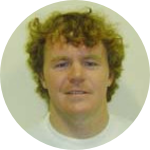About This Project
There are more extreme fires, floods and droughts happening now than ever before, and they’re happening everywhere, right? Actually, we don’t really know because instrumental records are too short. But proxy climate records, like tree-rings, can help. In southeastern Australia and New Zealand some trees live 1000+ years. In this project we will use growth rings in trees to make a digital map of extreme events for the past 500 years to see if extreme event frequency has or has not changed.
Ask the Scientists
Join The DiscussionWhat is the context of this research?
A projected shift towards warmer and drier conditions in the 21st Century will be accompanied by an increased risk of extreme climate events. Australia has had its fair share of drought, severe floods and fires in recent years, most recently the devastating Tasmanian World Heritage fires followed by severe flooding. The social, economic and environmental costs of extreme events run into billions of dollars. However, while clusters of extreme event seasons contribute to a perception of increasing frequency, our short instrumental records provide limited empirical support for such beliefs. A rapidly increasing pool of very long (500+ years) Australasian palaeoclimate proxy records is a rich resource from which to extract spatial and temporal information about past climate extremes.
What is the significance of this project?
Now more than ever we need to better understand recurrence intervals of extreme events. Although natural records of past climate can extend instrumental records by hundreds of years at high temporal resolution, there are relatively few examples where these records have been directly used to inform estimates of climate risk. As far as we are aware, our proposed mapping of palaeo-extremes through time and space is unique. Our project therefore provides a fresh way to derive information about underlying distributions of extreme climate events and their temporal and spatial variability. This information is urgently needed to guide future planning at all levels of government and to guide both climate adaptation and climate mitigation measures.
What are the goals of the project?
We have three clear goals in this project. First, to develop our 'palaeo-extreme seasons' map based on only extreme events recorded in long tree-ring chronologies in southeastern Australia and New Zealand. To develop this map we will compile and process regional tree-ring data and write required scripts for mapping. Our second aim, to make this map publicly available via our OzDendro website (http://www.ozdendro.org/), will require some web development. Third, we aim to use the available information to assess the likely climate dynamics that have led to the patterns of events observed over the ~ 500 year period. To do this, we will first target key years and periods identified through the mapping process. We will begin this project in June 2017, and finish by January 2018.
Budget
This project will enable two scientists to pilot the mapping of extreme events over the past 500 years using already available Australia/New Zealand tree-ring data. It will be used to showcase the wealth of information available from such maps, leading to funding applications to do the same for the larger Australasian region. This project will a) help overcome teething issues with using the data to construct one map for every year; b) enable us to begin assessing dynamic climate processes underlying particular spatial distributions of extreme events.
To complete the project, we will need to assemble tree-ring chronologies from raw data, build programming scripts to process data, jointly review the mapping software, and compile outputs. Two intensive one-week workshops will be needed to facilitate this process, hence the request for travel and accommodation funds. To make the map resource publicly available online, we will also need to pay for some web development services.
Endorsed by
Meet the Team
Affiliates
Team Bio
Between the two of us we have either developed or contributed to almost all the tree-ring chronologies in southeastern Australia and New Zealand and therefore have a unique understanding of dendrochronology in our own countries. Dr Palmer has had some experience with digital mapping and Dr Allen has the scripting skills required. We met on a field trip in New Zealand in 1999 after Dr Palmer had marked Dr Allen's PhD thesis.
Kathryn Allen
I received my PhD in dendroclimatology from the University of Tasmania in 1999. After a decade of working in local and state government, and teaching at both the secondary and tertiary levels, I took up a post-doctoral fellowship at Monash University in which I developed Australian tree-ring records sensitive to drought. This was followed by a fellowship with Melbourne University in which I was pivotal to pioneering development of climate sensitive records from alternative tree-ring properties such as cell diameter, cell wall thickness and microfibril angle that have not traditionally been used for climate reconstructions. I am now working towards an annually resolved temperature record for the Southern Hemisphere for the last 10,000 years, based on these alternative properties. The purpose of developing and improving records of past climate is to better understand both the past and the present climate variability.
This project will not only work towards providing critical information for managers and planners, but by making the mapped extremes over time available via a freely accessible webpage, the information an also be used as an educational resource. I consider this to be a very important part of our project because I am passionate about getting high school students more involved in on-the-ground science and to consider science as an exciting and relevant career. I am involved with CSIRO’s ‘Scientists in Schools’ program and have worked with small groups of students on dendrochronological projects. I also assist with student learning at the local school and believe it is imperative that Australian students experience science in action in order to arrest the current declining interest in science and technology subjects.
Jonathan Palmer
During the period since obtaining my PhD I have had a diverse range of research opportunities. I was a full time (1.0 FTE) tenured academic involved in teaching and research from 1990-2003 both in New Zealand and the U.K. After 2003 I was the director of a private tree-ring research laboratory in New Zealand until November 2012. Aside from New Zealand and Australia, research projects were undertaken in the following range of countries: Indonesia, Malaysia, Myanmar, Papua New Guinea, New Caledonia, Pakistan, Rwanda, Vanuatu. In many cases the pioneer research activities involved extensive counterpart training and in some cases failed to deliver any publishable results. However in other locations (such as Indonesia, Myanmar and Pakistan) the efforts yielded important advances to regional palaeoclimate understanding. In New Zealand I helped develop tree-ring chronologies from two species that now span more than two millennia (Agathis australis and Lagarostrobos colensoi) and also expanded the number of sites from other species. In November 2012 I was appointed a research fellow (fixed-term contract) at the University of New South Wales and have been working on further New Zealand and Australian tree-ring sites. One particular focus has been climate reconstructions for the subantarctic regions.
My primary contribution has been the development of a significant number (>100 sites) of tree-ring chronologies from the SE Asia/Australia/NZ region. I have either personally collected or supervised the students who developed most of the chronologies. These chronologies have been the basis of fundamental work on historical climate variability and forest ecology in parts of Australia, New Zealand and the Southern Hemisphere.
Project Backers
- 21Backers
- 42%Funded
- $1,644Total Donations
- $68.76Average Donation



